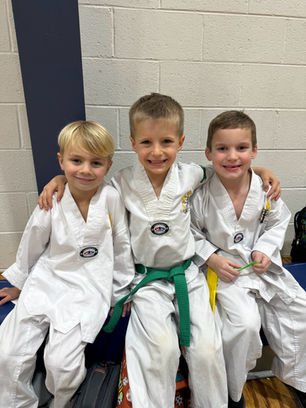A: Hapkido, Taekwondo, & Mixed Martial Arts.
A. Over 25 years.
A: First, complete a participation waiver. Next, pay monthly tuition and one-time registration.
Purchase your student’s uniform online (no uniforms from outside schools), come to class.
Class availability is based on class location.
A: No, there is no contractual obligation to attend class, however parents must
read, complete and return a participation waiver along with tuition plus first time
registration before their child can participate in class.
A: Yes, no exceptions. Uniforms must be purchased through I AM Defense. Outside uniforms are not allowed.
A: No.
A: Training shoes are only required for students that train in cafeterias. Students
that train in other facilities are not required to purchase shoes however it is
recommend due to various activities.
A: Yes, we have open enrollment.
A: Generally classes are held immediately after school. Start times vary between
3pm-4:30pm. Some classes are held in the evening beginning at 6pm.
A: Your child will learn basic self-defense techniques first along with basic martial
arts techniques like universal blocks, kicks and punches and strikes. Once the
foundation has been established your student will learn advanced levels of the same
movements along with throws and takedown techniques, combination techniques,
some forms and advanced locks.
A: Most children that attend our martial arts program experience an increase in
physical ability and improved health. With consistent attendance and balanced diet,
your child should experience these same results or better.
A: We recommend starting students at age 4.
A: Tuition is due the FIRST of each month.
A: Debit, credit, Paypal, money order, check and cash.
A: Yes, there is a standard one-time registration investment per student.
A: A belt test is your student’s opportunity to receive a higher rank for
displaying proficiency at their current level. Students are tested on skill,
preparation, attendance, attitude and spirit.
A: Yes, all students will have the opportunity to qualify for advancement.
A: Belt test are usually 40-50 minutes long depending on the number of students testing and
their anticipated rank.
A: Yes, belt testing investments are based on testing rank.
A: Although all students may not qualify for every test, belt test are conducted twice
a year usually at the end of each semester.
A: Sparring is when students practice their techniques against fellow training partners. Mock combat. It is one of the best ways for children to improve their martial arts skills
Sparring gear is the equipment used to ensure safety when students spar.
A: Students will learn about the importance of sparring once they begin class, however they will not be allowed to spar until after their first test or at the instructor’s discretion. Most students are excited to spar and look forward to doing it.
A. Yes. Martial arts is a long term activity. Martial arts is a unique activity for children because it involves a lot of self motivation and practice. Children today, are involved in other sports and/or activities. We want to keep it fun. Once a week will prevent burnout and help with scheduling your other extracurricular activities.


























